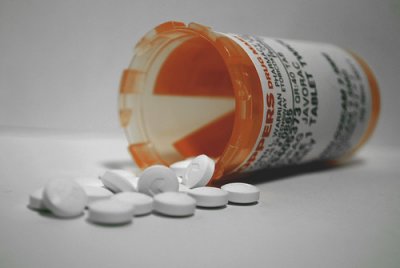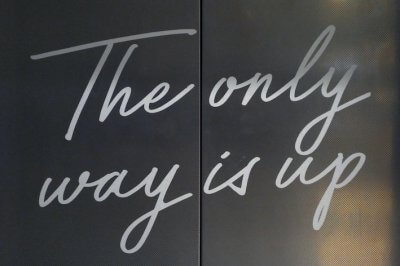Living with BPD: a Borderline Personality Disorder Case Study
Curious if you have borderline personality disorder? Actress and columnist Nicola Thorp shares her personal experience of living with BPD, from getting a diagnosis, attending therapy, and navigating symptoms.

photo by:Danny G
What is it like to have BPD?
“I started having what I refer to as ‘episodes’ when I was around six years old. They would usually come at night, when I felt the most vulnerable. It was like having a wide awake nightmare, where I would imagine my family being killed, or what would happen if my parents disappeared and I was left to fend for myself.
The running theme was that whatever tragedy had occurred, it was all my fault. If I’d turned off the bathroom light-switch with a slightly damp hand, I would lie in bed for hours, panicking that it would cause an electrical fire and I would be the reason my family would die in their sleep. The only way I could fall asleep in the face of my insurmountable guilt was by crying myself to exhaustion.
The panic continues
My parents and I hoped it would be something I would grow out of, but twenty years later I was still having panic attacks.
I started having impulsive, self-destructive thoughts during my episodes. While those close to me would describe me as a life-loving, positive and ambitious person, my mind was telling me to end it all, that I was worthless and deserved to die. Not knowing I was living with BPD, I called these thoughts my ‘Gremlins’.
Me and my gremlins
The Gremlins would instruct me to self-harm, or to put myself in danger.
When I was 18 and had gone through my very first breakup, the Gremlins told me to run into traffic and end my life. It came seemingly from nowhere.
I knew about suicide from TV shows I had watched and magazines I had read as a teenager. But it had always been portrayed as a pre-planned, carefully thought-out act.
For me, suicidal thoughts would just pop into my head out of nowhere and gave me very little time to prepare against them. I knew I needed to figure out what triggered these thoughts, and how I could arm myself for when they happened again.
My ‘breakdown’ and visit to the hospital

By: J m
One particularly bad episode culminated in me hitting my head against a sink in order to silence the Gremlins. A paramedic found me unconscious on the floor of my bathroom, and I was admitted to hospital.
I never viewed it as an act of self-harm, although it was clearly an unhealthy coping strategy. It was an attempt at self-preservation. I wanted to stop the impulsive thoughts in my brain telling me to do something far worse — to end my life.
I was put on suicide watch. My room was bare, with minimal furniture and fixtures in order to reduce the risk of me harming myself. My dad sat with me for hours as I stared blankly at the TV screen, neither one of us knowing what to say.
I remember feeling guilty for being there, like I was wasting everyone’s time, including that of my parents, who had driven for four hours to be by my side. The guilt was overwhelming. It led to me sneaking off hospital grounds when I wasn’t being watched.
I stood at the crossroads outside the hospital gate as I faced the biggest metaphorical crossroad of my life, to run away or accept help.
When I returned to my room, I overheard a doctor talking to my parents. ‘Am I going to lose my daughter?’, my dad asked the consultant, his voice shaking. In that moment I knew I was going to do everything I could to fight for survival.
The first diagnosis
When I was diagnosed, originally with bipolar disorder, I felt a sense of relief. It validated my concerns that what was happening wasn’t my fault, that there was something I could fight against and be medicated for.
I was so happy to have a label I didn’t voice my concerns over whether it was actually the correct diagnosis. Any ‘manic’ phases I had, for example, were short, and could be attributed to the fact that I had an energetic and passionate personality.

By: The Javorac
But I attended three weeks of consultations and therapy, determined to get better. My eagerness often got in the way of my recovery. I became self-critical when I didn’t see an immediate improvement. When I found out that other patients had been in that same hospital for years, I feared that I would become institutionalised and forget how to function in society.
I discharged myself, adamant that I was better suited to recovery in the real world rather than in a hospital.
But I soon learnt that my journey to wellness would be a marathon, and not a sprint.
Do I have borderline personality disorder?
After two years of being medicated for bipolar disorder, my symptoms hadn’t disappeared. I’d go through long spells of normality, feeling energetic, optimistic and content with where my life was at. But then there would be events in my social and romantic life that would trigger off the Gremlins and I’d feel like I was back at square one.
When a relationship ended, it felt like a death to me, even if I had only been dating someone for a few weeks. If the other person suddenly appeared to lose interest, it would have devastating consequences on my self-esteem and ability to function. I wouldn’t be able to eat, sleep or exercise for days, and I would spiral into a state of panic. If I had a disagreement with a friend, I would panic that they would never speak to me again.
I know that everyone suffers from a fear of abandonment, it’s part of the human condition. But I felt it so strongly I’d be paralysed with fear. The more I reached out to check everything was ok, the more I would feel myself pushing them away.
I knew that something wasn’t right. This didn’t fit with my hospital diagnosis, so I turned to the internet for answers.
I stumbled across a borderline personality disorder case study similar to the one I’m writing now. It was written by a woman who had also initially been diagnosed with bipolar disorder before realising she was living with BPD. She experienced many of the symptoms I had displayed, and the feelings I had felt.
Receiving a personality disorder diagnosis

photo by: Youssef Naddam
I booked an appointment with my GP but was nervous to suggest a diagnosis I had found on the internet, even though she was so kind and receptive.
I reminded myself that there is no shame or embarrassment to be had in advocating for your mental health and wellbeing, and I brought up the topic of BPD. What a relief when she said it was a diagnosis she thought I would qualify for!
Therapy for BPD
I was referred to therapy and that’s where my journey to recovery truly began. I know many people find therapy daunting and I can certainly empathise with that. It can take time to find someone you click with.
My first therapist, to be honest, came across as cold and uncaring. She didn’t look me in the eye when I spoke, and although she nodded her head every so often, I didn’t think she was really listening to what I was saying.
When I explained that my job would make it difficult for me to commit to a six-week afternoon course of mentalisation-based group therapy, she asked whether I was committed to getting better at all. After everything I had been through, how could she possibly suggest that getting better wasn’t my priority? I left our sessions feeling worse than when I arrived.
My second therapist was a breath of fresh air. It didn’t feel like he was in a rush to end our sessions. There was no clock ticking loudly on the wall. He listened to all of my concerns and worries, and put together a schedule that could work around my job. After getting to know my history, he agreed that BPD would be a more fitting explanation for what I had been through, and was still battling with.
I told him about my concerns over the BPD label. I had read a lot online from other people that some medical practitioners had pigeon-holed BPD patients as ‘attention-seeking’ and denied them further treatment. My therapist reassured me that there was nothing disordered about my personality. He would work alongside me, not against me, in order to start the healing process I had longed so many years for.
Telling friends about having a BPD diagnosis
When I first told friends about my diagnosis, some of them were confused by it, and I don’t blame them. There is so much conflicting information online about BPD. And for someone who has no experience with the condition, it can be quite daunting to understand what living with BPD is all about.
I soon learnt that true friends weren’t ever going to judge me, and that there was no requirement for me to tell them anything at all if I didn’t feel comfortable with it.
What does it mean to be borderline?
The main thing I have learnt on my journey is that no two people have the same experience with BPD, and all experiences are valid within their own right. You have to find the tools that work for you personally.
Deal with the label in a way that makes sense to you. BPD is also sometimes known as ’emotionally unstable personality disorder’, but even that label feels somewhat prejudiced to me. It felt as though my very real issues were being labelled as some sort of ‘mood swing’. As a woman, I had too often been called ‘overemotional’ and told that I had ‘overreacted’ to something, when my responses felt real and justified to me.

photo by: Nick Fewings
It’s also important to find your community. I joined Facebook groups and online BPD forums with people who had also been diagnosed. Being able to talk to people who had an understanding of what I was going through was one of the greatest tools I could arm myself with. The people I met were some of the most compassionate and empathetic people one could hope to meet.
Living with BPD
After six months of therapy, I got myself to a stage where I would no longer qualify for the BPD diagnosis. That doesn’t mean I’m cured, and my journey is far from over. I still suffer from feelings of emptiness, and I still have a fear of abandonment. But being able to externalise those feelings has proven invaluable in my journey to understanding them, and accept them for what they are.
How I now handle my BPD
Similar to a person who has overcome an addiction, I have learnt that living with BPD means to live my life in a way that reduces my risk of being exposed to triggers. I developed the tools to be able to handle those triggers without the Gremlins taking me hostage again.
When I feel a panic attack coming on, I remind myself that I have dealt with one before, and I can deal with it again. That doesn’t make them any less frightening. But I have discovered more coping strategies to make sure they don’t take control of my life or my mind.
I stop what I’m doing, and recognise that nothing bad will happen if I simply pause and wait for some clarity before I respond. Finding a quiet place is my next step (if I’m out in public, I will excuse myself to the bathroom). I take some deep breaths. Then I reach out to a trusted friend, or one of my parents, and they are able to remind me that nothing bad is going to happen if I just take some time to calm my mind and try to see things clearly.
Feelings are just feelings
I know now that relationships are not the be all and end all of my life. When I feel a friend growing distant, I have learnt to accept that this doesn’t mean I have lost them forever. I remind myself that I cannot control the feelings or reactions of others, I can only seek to govern my own.
Fighting against my feelings was always going to be a losing battle, so I have learnt to accept them for what they are. Just feelings. And they, too, shall pass.
Suspect you are living with BPD and ready for a diagnosis and treatment to move forward? We connect you with expert and friendly psychiatrists and psychotherapists in central London. Or use our booking platform to find a UK-based BPD therapist now.
Still have a question about living with BPD? Post below. Note we cannot provide counselling or diagnosis over comments.
 Nicola Thorp is an actress, broadcaster, columnist and equality campaigner. She writes a weekly column in the Metro covering topics such as mental illness, women’s rights and social justice. As an actress, Nicola is best known for her role as Nicola Rubinstein in Coronation Street, and featured in Dr Who, The Guilty, and Father Brown. She can be seen as a regular panellist on This Morning. Find her on Instagram and Twitter.
Nicola Thorp is an actress, broadcaster, columnist and equality campaigner. She writes a weekly column in the Metro covering topics such as mental illness, women’s rights and social justice. As an actress, Nicola is best known for her role as Nicola Rubinstein in Coronation Street, and featured in Dr Who, The Guilty, and Father Brown. She can be seen as a regular panellist on This Morning. Find her on Instagram and Twitter.





Hi,
I love your community and have learned a lot, including knowing myself more.
Does apathy necessarily erases most emotions or decrease their effect? And is it a must for SAD or depression to have physical/visual symptoms ?
Last year my college psychologist told me that I might have depression+SAD, but I don’t experience the physical sympotms (sweating/heavy breathing/shaking…), and have developed a noticeable apathy since I emotionally detached myself from my family (and some of my friends) and more when I lost my dogs last year. After taking dozens of SAD/depr internet tests (including the Beck test) [got moderate in both disorders], I think I’m doubting myself; am I just lazy/unmotivated tryhard shy person, or is there something wrong with me?
I cannot thank you enough for all the free content you put out there for a better world and mental health awareness 🙂
Have an amazing 2021
Hi Charbel, sweating/heavy breathing/ shaking aren’t actually symptoms of depression or SAD, which is a form of depression. They are symptoms of anxiety. Physical symptoms of depression are fatigue, feeling like your limbs are heavy with exhaustion, a foggy mind, and changes to eating and sleeping patterns. There are many forms of depression, from mild to severe, you do not have to have the physical symptoms. Apathy makes us feel numb, we might still have emotions but they feel far away and foggy and inaccessible. Cutting ourselves off from family and losing loved ones can often lead to grief and depression. Being hard on yourself, i.e., blaming yourself as ‘lazy’, is a form of low self-esteem which is also connected to depression. Did your school psychologist suggest a treatment path? Perhaps some counselling? If so, what is stopping you from following that route? It could only benefit you. Best, HT
Hello again,
I might be confused with the symptoms from reading from too many sources, but I rarely feel any. I got a book called “How to deal with low self-esteem” by Christine Wilding which uses a CBT approach and STEP Past method years ago, but I started taking it seriously last week.
I agree, apathy make emotions look blurry and distant; when around friends I force myself to laugh and smile even when I don’t feel like it, and if I ever found myself crying thinking about bad experience I find myself self conscious enough to instantly stop it and get back to normal. (I intentionally distanced myself from my family for the greater good, as they hold me back in life).
In college, it was actually counseling sessions. My counselor gave me step by step routines (very similar to the CBT book), and at that time I would force myself to socialize and approach women (I’m a shy introvert by nature), but it didn’t amount to anything, and I stopped trying after I experienced a dog loss, and I can’t afford getting professional help.
The main driver of this “depression” (I’m not sure if I have it cz I don’t look like these stereotypes that wear black all day, cut their wrists and cry under the shower) is that I always don’t succeed in any path I choose to take in life: sports, social skills, dating, career, hobbies… Success seems like an imaginary experience for me, and that drove me to stop making any more effort. In life, everyone seems to get what they work for, and it looks like they’re living “automatically” and their life is perfectly customized (no other words to really describe this), but not in my case; whatever task I work hard for doesn’t seem to be achieved, that’s why I’m a multitalented person but haven’t mastered any skill. Now every decision I take in life takes effort and energy from my part, like I have to “manually” progress.
To sum it up, I gave up on everything in life and putting faith on the CBT book before I seek help, because, well, why trying so hard to fail if I can just fail without effort?
I didn’t expect a reply, you’re really a trustworthy community!
Thank you for your time and I hope this message isn’t so long <3
Hi there Charbel, it does sound like you are going through depression. The things you said are movie cliches. Depression can be that high flying famous business man, the movie star, the mother with three kids, an average student, anyone. And many people hide it. Comparing yourself to others is proven to cause depression, particularly as you don’t really know what their lives are like, you are assuming they are okay and better than you. But the depressed mind will encourage such thinking. We don’t by the way see any sort of BPD thinking here, although we don’t you and can’t diagnose someone we don’t know based on a comment… except for perhaps cutting off your family, but it might be just depression driving all of this. We are glad you are enjoying your book, but you do merit support and help if you decide to take that step again. Best, HT.